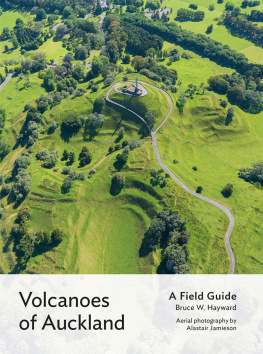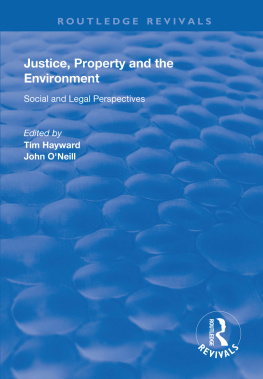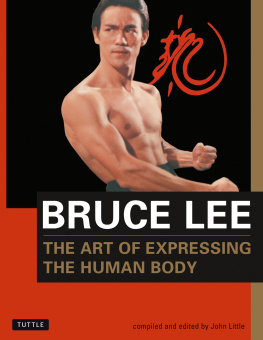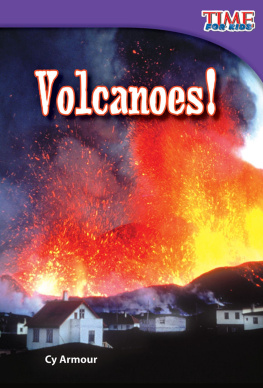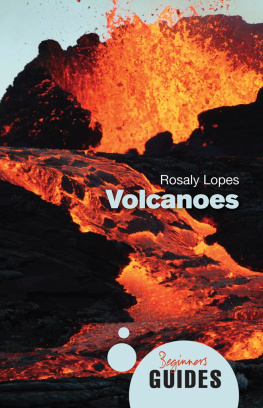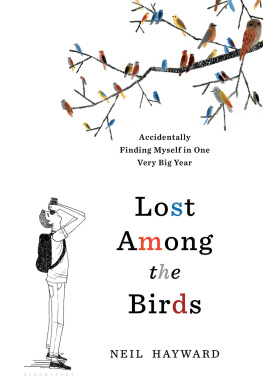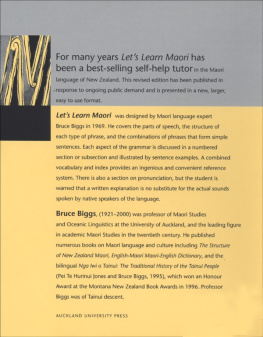Bruce W. Hayward - Volcanoes of Auckland: A Field Guide
Here you can read online Bruce W. Hayward - Volcanoes of Auckland: A Field Guide full text of the book (entire story) in english for free. Download pdf and epub, get meaning, cover and reviews about this ebook. year: 2019, publisher: Auckland University Press, genre: Romance novel. Description of the work, (preface) as well as reviews are available. Best literature library LitArk.com created for fans of good reading and offers a wide selection of genres:
Romance novel
Science fiction
Adventure
Detective
Science
History
Home and family
Prose
Art
Politics
Computer
Non-fiction
Religion
Business
Children
Humor
Choose a favorite category and find really read worthwhile books. Enjoy immersion in the world of imagination, feel the emotions of the characters or learn something new for yourself, make an fascinating discovery.
- Book:Volcanoes of Auckland: A Field Guide
- Author:
- Publisher:Auckland University Press
- Genre:
- Year:2019
- Rating:4 / 5
- Favourites:Add to favourites
- Your mark:
- 80
- 1
- 2
- 3
- 4
- 5
Volcanoes of Auckland: A Field Guide: summary, description and annotation
We offer to read an annotation, description, summary or preface (depends on what the author of the book "Volcanoes of Auckland: A Field Guide" wrote himself). If you haven't found the necessary information about the book — write in the comments, we will try to find it.
Volcanoes of Auckland: A Field Guide — read online for free the complete book (whole text) full work
Below is the text of the book, divided by pages. System saving the place of the last page read, allows you to conveniently read the book "Volcanoes of Auckland: A Field Guide" online for free, without having to search again every time where you left off. Put a bookmark, and you can go to the page where you finished reading at any time.
Font size:
Interval:
Bookmark:
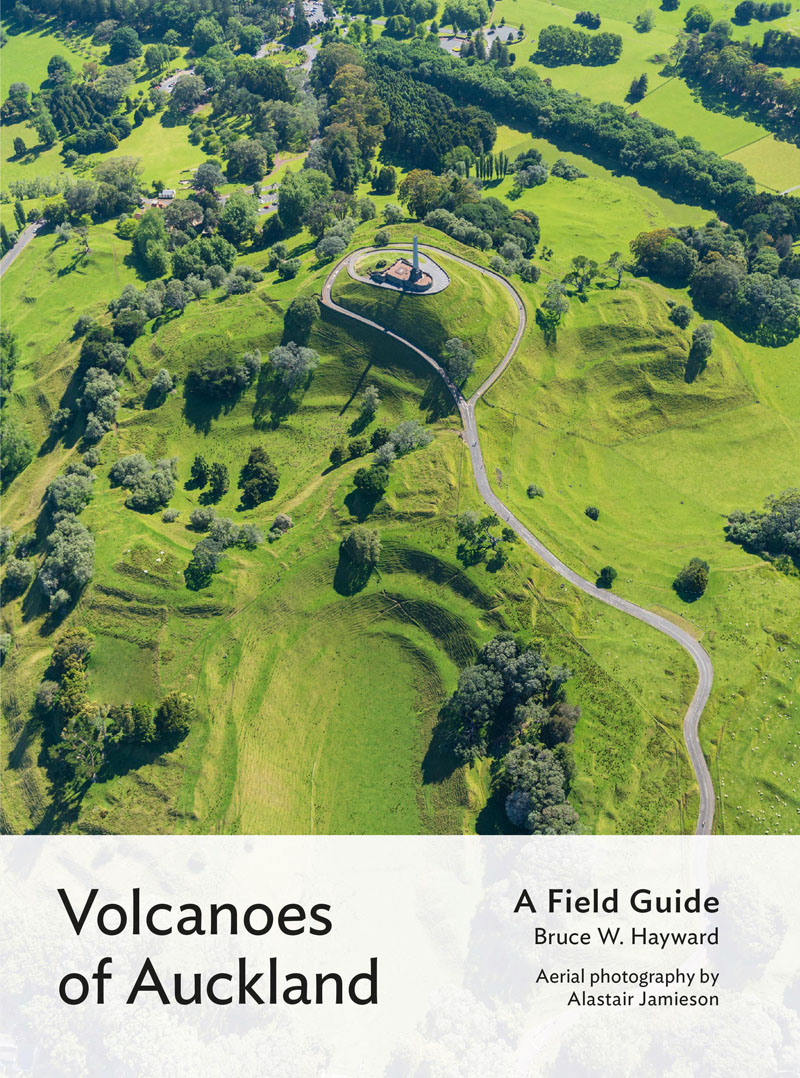
Praise for the authors previous Volcanoes of Auckland: The Essential Guide
The Auckland of a beautifully illustrated new book has a sensational history, full of fusiform bombs, superheated steam, pulsating episodes and ballistic trajectories. the book includes stunning aerial photographs, historic paintings and maps, and information about the geology, landforms and human history of each volcano. NZ Listener
an excellent introduction to the formation of Aucklands volcanoes and peoples historical interactions with them. It is a handsomely illustrated, excellent guide book. And you cant help but think what a ridiculous place to build a city. Ian Steward, Waikato Times
a lavishly illustrated and approachable essential guide. I have often wondered how much green space the city would have if we didnt have these big lumps that are so damned hard to build on. Mark Broatch, Sunday Star-Times
With this essential guide in your Christmas stocking, you can go out and (re)discover Aucklands volcanoes, including those now frozen in time under housing or industrial estates. Mark Bellingham, Forest & Bird
Bruce W. Hayward is a retired geologist and marine ecologist based in Auckland. He is a former member of the Auckland Conservation Board and New Zealand Conservation Authority, and former president of the Geological Society of New Zealand. His wide interests in natural and human history have resulted in twenty previous books on topics as diverse as archaeology, the kauri timber and gum industries, the history of Auckland cinemas, New Zealand fossils, volcanoes, building stones and conservation; and, as joint author, the popular A Field Guide to Auckland.
Alastair Jamieson is an Auckland-based ecologist and photographer who has documented the regions changing natural environment with aerial photography for over 25 years. You can see more of his images at www.wildearthmedia.com
First published 2019
Auckland University Press
University of Auckland
Private Bag 92019
Auckland 1142
New Zealand
www.press.auckland.ac.nz
Bruce W. Hayward, 2019
ebook ISBN 978 1 77671 049 2
Published with the assistance of the Stout Trust
A catalogue record for this book is available from the National Library of New Zealand
This book is copyright. Apart from fair dealing for the purpose of private study, research, criticism or review, as permitted under the Copyright Act, no part may be reproduced by any process without prior permission of the publisher. The moral rights of the author have been asserted.
Design by Carolyn Lewis
Maps designed by Bruce W. Hayward
Front cover image: Eruptions some 60,000 years ago created Maungakiekie/One Tree Hill, the second largest volcano in the Auckland Volcanic Field and one of the most elaborate archaeological site complexes in New Zealand. Photo by Alastair Jamieson
Back cover image: The central scoria cone of Motukorea/Browns Island, one of the least modified volcanoes remaining in the Auckland Volcanic Field. Photo by Alastair Jamieson
Back endpaper image: Rangitoto Islands inhospitable lava flows are still being colonised by a summer-flowering phutukawa forest 600 years after the volcano ceased erupting. Photo by Alastair Jamieson
Printed in China by Everbest Printing Investment Ltd
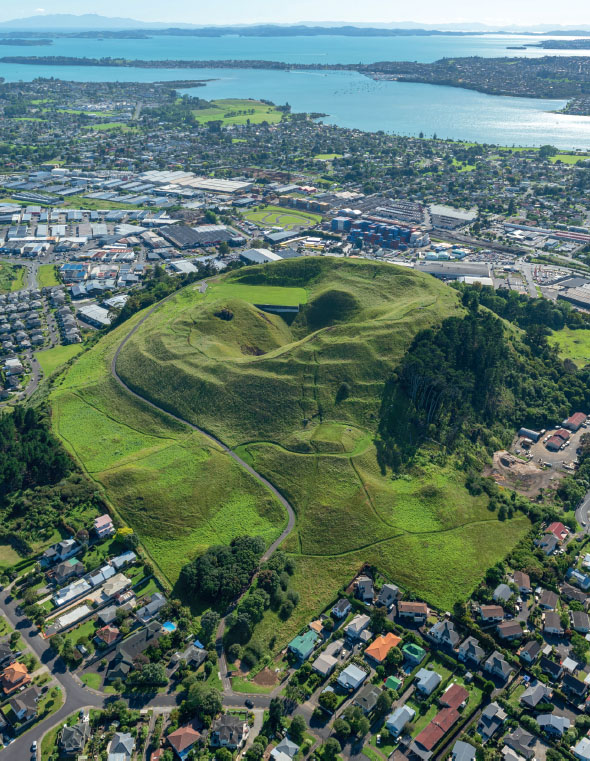
Maungarei/Mt Wellington scoria cone from the southwest in 2018. Photo by Alastair Jamieson
Auckland is often referred to as the City of Sails but it has an even stronger claim to the title City of Volcanoes. Not only is much of the city built over the geologically young Auckland Volcanic Field, but much of the city is also built out of its volcanoes the scoria cones and lava flows have provided much aggregate for constructing the citys buildings and its roads. The shape and form of the citys land area is strongly influenced by the landforms created by the volcanoes. Many of the citys hills and basins, as well as parts of the coastlines of both harbours, owe their origins to volcanic activity. Most of the remaining small volcanic cones are now much-loved parks that provide character to the city, playgrounds for its citizens and a sense of place for each suburb. Many of Aucklands older suburbs are named after their local volcano Mt Eden, Mt Albert, Mt Roskill, Mt Wellington, Mt Richmond, Three Kings, One Tree Hill, Mngere, thuhu, Remuera, Manurewa and Wiri.
Fifty-three volcanoes have erupted within 20 km of the citys centre, from Lake Pupuke in the north to Wiri Mountain in the south, and Mt Albert in the west to Pigeon Mountain in the east. For hundreds of years, these volcanoes have played a key part in the lives of Mori and Pkeh as sites for Mori p and 20th-century military fortifications, as kmara gardens and parks, as sources of water and stone.
How many volcanoes are there? When did they erupt and how do we know? Will there be another eruption in Auckland and, if so, where and when? Will we have sufficient warning to evacuate in time? What is a lava cave, a volcanic bomb or a tuff ring? Why were Aucklands volcanoes such an attraction to early Mori? Why is it that Aucklands freshest water comes out of our volcanoes? This book sets out to answer these and many more questions.
The book has two parts the first provides a general account of the geology and human history of Aucklands volcanoes, and the second, larger section provides a field guide for those who may wish to visit and explore each volcano or at least envisage what some of them once looked like before they were destroyed by our growing city.
Although this book is derived from Volcanoes of Auckland: The Essential Guide, published in 2011, its contents and format have been updated to reflect its purpose as a field guide. In the first part, a number of sections included in the previous book have been left out, whereas others, particularly those on the age of the volcanoes, have been extensively updated following recent research advances. In the second part, the sections on each of the volcanoes have been reworked to provide more detail about what you can see when visiting. Some illustrations have been retained but over 70 per cent of the photographs and maps are new. Since 2011, three additional volcanoes have been recognised (Boggust, Cemetery and Puhinui craters) and these are also included.

The best-known symbol or icon of Auckland City is Rangitoto Island the youngest and largest volcano in the Auckland Volcanic Field.
Most people think of a volcano as a single large cone that has built up by a series of eruptions over a lifetime of thousands to hundreds of thousands of years. All the iconic cone volcanoes of the world are of this kind and include most of New Zealands best-known volcanoes, such as Mts Taranaki, Ruapehu, Nguruhoe and Whakaari/White Island. Over time, this type of volcano erupts a considerable amount of lava and ash, often from a single vent at the centre of the cone. They all have a magma chamber at a relatively shallow depth (510 km) beneath them that periodically clears its throat and erupts part of its contents at the surface.
Next pageFont size:
Interval:
Bookmark:
Similar books «Volcanoes of Auckland: A Field Guide»
Look at similar books to Volcanoes of Auckland: A Field Guide. We have selected literature similar in name and meaning in the hope of providing readers with more options to find new, interesting, not yet read works.
Discussion, reviews of the book Volcanoes of Auckland: A Field Guide and just readers' own opinions. Leave your comments, write what you think about the work, its meaning or the main characters. Specify what exactly you liked and what you didn't like, and why you think so.

